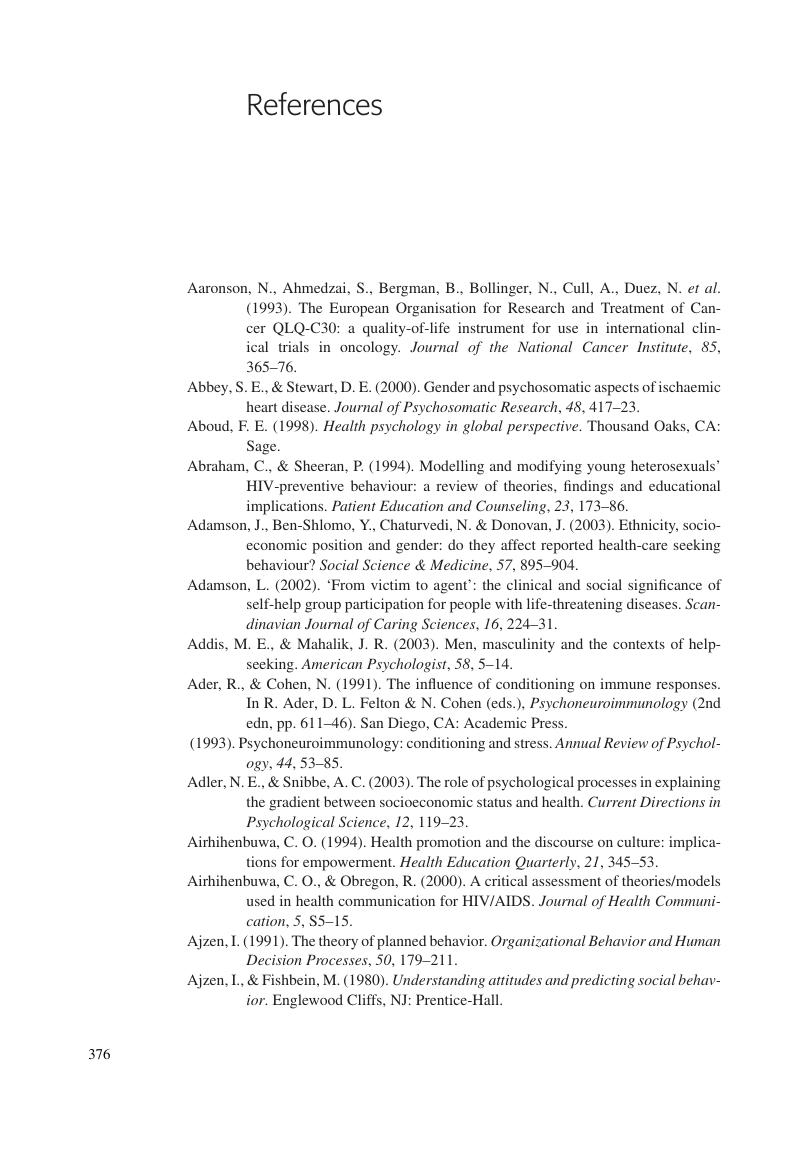Book contents
- Frontmatter
- Contents
- Acknowledgements
- Setting out: using this book
- 1 Locating the field: introducing health psychology
- 2 Thinking about health and the body
- 3 Choosing lifestyles
- 4 Controlling the body
- 5 Becoming ill
- 6 Comprehending bodily experience
- 7 Interacting with health professionals
- 8 Treating illness
- 9 Being ill
- 10 Dying
- 11 Relocating the field: critical health psychology
- Glossary
- References
- Author index
- Subject index
- References
References
Published online by Cambridge University Press: 05 June 2012
- Frontmatter
- Contents
- Acknowledgements
- Setting out: using this book
- 1 Locating the field: introducing health psychology
- 2 Thinking about health and the body
- 3 Choosing lifestyles
- 4 Controlling the body
- 5 Becoming ill
- 6 Comprehending bodily experience
- 7 Interacting with health professionals
- 8 Treating illness
- 9 Being ill
- 10 Dying
- 11 Relocating the field: critical health psychology
- Glossary
- References
- Author index
- Subject index
- References
Summary

- Type
- Chapter
- Information
- Health PsychologyA Critical Introduction, pp. 376 - 429Publisher: Cambridge University PressPrint publication year: 2006

